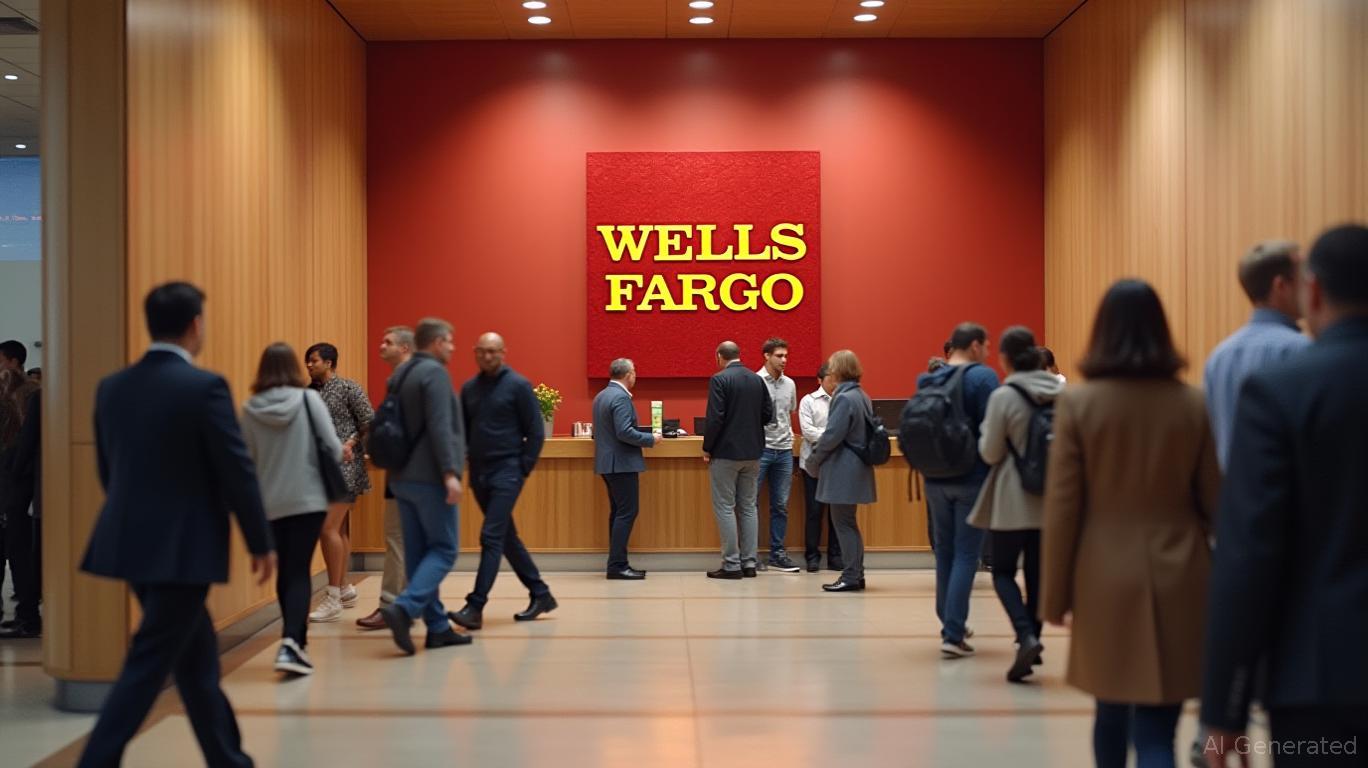Wells Fargo's Mixed Signals: Can Fundamental Turnaround Overcome Structural Challenges?
Wells Fargo (WFC) has long been a bellwether for the U.S. banking sector, but its Q1 2025 earnings report has investors grappling with a complex picture. While the bank posted a 6% year-over-year rise in net income to $4.9 billion, driven by disciplined cost management and improved credit metrics, its revenue declined 3.4% to $20.15 billion. This juxtaposition of resilience and headwinds raises critical questions: Is Wells Fargo's recovery underway, or are structural challenges still stifling growth? Let's dissect the data to find out.

Fundamental Turnaround: Progress Amid Contradictions
The earnings report reveals both encouraging signs and lingering vulnerabilities. On the positive side:
- Cost discipline: Operating expenses fell 3% year-over-year, with reductions in FDIC assessments and operational losses offsetting rising compensation costs in wealth management.
- Credit quality: Net loan charge-offs improved to 0.5% of loans, below analyst expectations, and the provision for credit losses dipped 3% to $932 million.
- Shareholder returns:
However, revenue pressures persist:
- Net interest income (NII) declined 6%: Falling rates on floating-rate assets and compressed deposit margins weighed on NII to $11.5 billion.
- Loan portfolio contraction: Average loans fell 2% to $908.2 billion, with auto lending down 21% and commercial real estate (CRE) net interest income dropping 13%. This reflects a cautious lending posture amid uncertainty around trade policies and economic growth.
- Efficiency ratio worsened: The ratio rose to 69% from 67.8% expectations, signaling operational inefficiencies that could hamper profitability.
Market Sentiment: A Fragile Optimism
Despite the mixed results, the stock rose nearly 2% in pre-market trading after the report. This reflects a cautious optimism about the bank's ability to navigate near-term headwinds. The EPS beat ($1.27 vs. $1.23 estimates) and stable non-interest income—bolstered by wealth management fees and investment banking gains—provided support.
Yet broader sentiment remains cautious. The stock has underperformed the S&P 500 by 1.7 percentage points over the past year, and the Zacks Rank #3 ("Hold") underscores skepticism about outperformance in the short term. Investors are likely waiting for clearer signals on:
1. Loan growth recovery: Can Wells Fargo reverse its loan contraction, particularly in auto and CRE?
2. Cost management: Will the efficiency ratio improve as deposit pricing stabilizes?
3. Economic risks: How will trade policy shifts under the Trump administration affect corporate and consumer credit demand?
Key Risks and Turning Points
- Economic slowdown: CEO Charlie Scharf's warning about a “slower economic environment” in 2025 is critical. A recession could pressure loan demand and credit quality further.
- Interest rate dynamics: The Fed's policy path remains uncertain. Lower rates could squeeze NII, while rising rates might revive loan demand but also increase deposit costs.
- Regulatory and legal tailwinds: The dismissal of a CFPB lawsuit over Zelle payment handling is a positive, but legacy issues (e.g., past misconduct) still loom in public perception.
Investment Implications: A Wait-and-See Approach
For now, investors should remain cautious but vigilant. Wells Fargo's valuation—trading at 1.2x book value and 10.5x forward earnings—appears reasonable relative to peers like JPMorgan (JPM) and Bank of America (BAC). However, the path to recovery hinges on:
1. Loan growth stabilization: A rebound in CRE lending or auto finance would signal demand resilience.
2. Margin improvement: A return of NIM to 3%+ levels would boost profitability.
3. Efficiency gains: Reducing the efficiency ratio to 65% or below would demonstrate better cost control.
Final Take
Wells Fargo's Q1 results show flickers of progress but highlight persistent structural challenges. The bank is navigating a treacherous mix of economic uncertainty, regulatory scrutiny, and margin pressures. While the dividend remains secure (currently yielding 2.8%), and share buybacks are a positive sign, investors should wait for clearer evidence of sustainable loan growth and margin stability before betting on a full recovery. For now, a “Hold” stance aligns with the market's cautious tone—until Wells Fargo proves it can turn mixed signals into consistent momentum.

Comments
No comments yet